Chrysanthemum Multiflora is a relatively new and already very popular plant species, which is endowed with extraordinary decorative qualities and versatility in use. Amateur gardeners and professional landscape designers immediately fell in love with these crops also for their genetic ability to form a spherical shape of bushes without pruning.
|
Multiflora chrysanthemum varieties almost always look like a huge bright ball of many small baskets of various colors and shades, which tightly cover the bright green foliage for two or even two and a half months. |
| Content:
|
Most Multiflora chrysanthemums do not tolerate winter cold, but they are highly resistant to spring frosts. This allows them to be planted in open areas already in the first days of April. Globular, low-growing varieties of chrysanthemums can be divided into several groups according to the color of the inflorescences, flowering time and height.
In the huge Multiflora family, there are about four thousand varieties and hybrids of chrysanthemums, which are presented in a wide range of colors. The basket inflorescences can be burgundy and pink, red and yellow, white and purple, violet and lilac. There are varieties with blue and green shades, two and three-color specimens.
Such diversity allows everyone to choose the most suitable plant in terms of color, resistance to climate and weather, size and beginning of flowering, and purpose. Blooming chrysanthemums will be a wonderful decoration for a flower bed and flower garden, an alpine hill and gazebo, a greenhouse and a balcony.
Early varieties of spherical chrysanthemums
Uranus
|
A large-flowered variety of chrysanthemums, the spherical shape of which does not require formation; everything happens naturally, in a natural way. |
Low-growing bushes are often planted in multi-tiered flower beds or against a green lawn.
- The lush spherical culture does not exceed forty centimeters in width and height.
- The double inflorescences are painted in two shades: the oblong petals are bright pink, the middle is dark burgundy. The average flower size is about eight centimeters.
- At the beginning of August, a large number of buds appear on the plants, which begin to open in the second half of the month. The flowering period continues until severe autumn frosts.
- Due to low frost resistance in winter, flowers are dug up and stored in the basement at a temperature of two to five degrees.
Uranus is also suitable for growing indoors, but as a potted plant it does not bloom as luxuriantly as in open ground.
Ares
|
Ares looks great in combination with other varieties of different colors, but can also be used for single planting. |
An early flowering variety of spherical chrysanthemums, which has proven itself well in Siberia and other northern regions.
- The average height of a flowering crop is from thirty to forty centimeters, the diameter of the crown is approximately the same.
- The size of the double soft pink inflorescences is approximately five to seven centimeters.
- Lush landscaping and the formation of buds can be observed already at the end of July, and the first flowering can be observed in early August. Chrysanthemums delight with their lush flowers until the beginning of November.
- For the winter, it is recommended to cover the bushes with a thick layer of fallen leaves, sawdust, spruce branches, and in very cold regions - with additional covering material.
Beautiful spherical bushes are endowed with an important feature - they are resistant to various pests and diseases.
Destino Pink
|
The small-flowered variety is a compact flowering bush with numerous double inflorescences-baskets. |
The unpretentiousness of the crop allows it to be grown in the Urals, Siberia, and the Moscow region on open ground, in greenhouse conditions and in pots.
- An adult bush reaches thirty-five to forty centimeters in height.
- The spherical crown consists of many small flowers with a diameter of about four centimeters. From the edge to the middle, the inflorescence is painted in various shades of pink - light, bright, saturated, dark. Closed buds are purple in color.
- The first flowering can be seen in mid-August. Its active phase begins at the end of September.
- In an open area, crops overwinter under reliable shelter, but plants can be stored until spring in a basement or cellar at a temperature of about five degrees Celsius.
To speed up the flowering of spherical chrysanthemums, it is recommended to use regular spraying with a solution of the drug “Bud” or “Epin”. Three treatments with an interval of ten days are enough.
Branking Sunny
|
Chrysanthemum Branking Sunny |
The low-growing, early-flowering variety can be grown in containers on balconies and indoors, but most often it is used to create a flower border in the open ground or in group plantings in flower beds and lawns.
- The height of the bush most often stops at around thirty centimeters.
- The inflorescences, about four centimeters in size, resemble small suns. Bright and lush yellow baskets create an elastic crown in the shape of a ball.
- In the second half of August, the first flowers appear. They last for two to two and a half months.
- Due to low winter hardiness, after flowering, chrysanthemums are cut to ten centimeters above ground level, after which they are dug up and taken to the basement for storage.
To maintain the high decorative value of the Multiflora chrysanthemum, it is recommended to replant it every two to three years to a new site.
Branbeach Orange
|
A moderately winter-hardy early variety that blooms much earlier than other chrysanthemums. |
The plants attract attention with their lush yellow-orange crown, through which numerous leaves are not even visible.
- The average height of an adult bush is about thirty centimeters.
- The size of flowering terry baskets is from three to four centimeters.
- The period of active mass flowering lasts approximately two and a half months and occurs in mid-August, September and the first part of October.
- When the weather settles at low sub-zero temperatures, it is necessary to prune and hill up the crop with earth, sawdust or peat. Under the shelter of chrysanthemums they will withstand frosts from eighteen to twenty-three degrees.
On a note! If you cover chrysanthemum bushes for the winter at above-zero temperatures and possible autumn precipitation in the form of rain, the plants may die from soaking or subsequent freezing.
Branfontein Purple (Branfountain Purple)
|
The early-flowering variety is a voluminous bush with a large number of very beautiful double inflorescences. |
The formation of buds occurs at a temperature of about twenty degrees Celsius, but active flowering, in all its glory, occurs at ten degrees Celsius.
- The width of the bush and height are about fifty centimeters.
- Densely double flowers up to four centimeters in size are painted in lilac and purple shades.
- Depending on the region, the flowering period begins in early or late August and continues until the first frost.
- For the winter, the plants are removed from the ground and stored in a dark, cool place.Once a month, the bushes are watered with a small amount of settled water or covered with snow.
Swampy areas and areas with drafts should not be used for planting chrysanthemums. Heavy soils must be diluted with sand and peat.
Branhill Red
|
An early winter-hardy variety of chrysanthemums is presented in the form of a compact spherical bush with small terry baskets. |
Plants prefer to grow in open areas with full lighting and fertile soil. Low-lying areas and waterlogging should be avoided.
- The crop grows in height up to thirty to forty centimeters, no more.
- The size of each burgundy, red or dark cherry flower is about three and a half to four centimeters.
- During the flowering period, which lasts from mid-August to October, the bush is densely strewn with lush inflorescences. A large number of them completely cover the green foliage.
- Chrysanthemum can overwinter in open ground. First, pruning is carried out, leaving a stem about ten centimeters high above the ground, and then hilling with peat, sawdust or fallen leaves about fifteen to twenty centimeters thick.
Branbeach Coral
|
Terry early variety with flat inflorescences in baskets. |
To obtain a lush spherical bush, it is necessary to strictly observe the interval when planting. The optimal distance between seedlings is at least fifty centimeters.
- The height of an adult flowering plant is fifty to sixty centimeters, width is about forty centimeters.
- The coral-hued flowers are colored in light colors along the edges and more saturated in the center. The size of each inflorescence is approximately the same and amounts to five to six centimeters.
- Crops bloom early - in mid or late August, depending on the local climate.
- For wintering, plants are sent to a cool room and kept until spring at a temperature of about three to five degrees Celsius.
Daphne
|
The terry, small-flowered, low-growing variety Daphne has many varieties that differ in the color of the inflorescences. |
Baskets can be white and red, pink and burgundy, with many light and dark shades.
- The compact spherical bush does not exceed thirty centimeters in height.
- Small three-centimeter baskets grow densely and densely cover the surface of the bush, turning it into a large flowering ball.
- The first flowers open at the end of summer and continue to bloom until the end of October.
- In southern latitudes, chrysanthemums are cut off after flowering and covered with a large layer of dead wood. In northern regions, it is recommended to dig up crops and store them in a cool, dark room in winter.
Middle and late varieties
Branfontain Lemon
|
Chrysanthemum globulus Branfontein Lemon, no leaves visible behind the flowers |
The mid-early, profusely and luxuriantly flowering variety is a spherical bush with numerous small inflorescences - baskets. With proper care, the number of flowers is such that the foliage is absolutely invisible.
- The crown diameter and height of an adult crop are approximately the same size - fifty centimeters.
- Small and delicate-looking lemon-yellow baskets about four to five centimeters in size begin to bloom in early September.
- The flowering period lasts until the first frost and is at least one and a half months.
- It overwinters only under reliable shelter. In northern latitudes, it is better to remove chrysanthemums from the ground and store them indoors.
Jacqueline Peach (Jacqueline Peach)
|
A very beautiful and spectacularly colored variety, the flowers of which combine two bright and juicy shades - yellow and pink or yellow and purple. |
To plant seedlings, it is very important to choose an open area on a small hill with nutritious and light soil.
- The average height of a flowering plant is from thirty to thirty-five centimeters.
- The inflorescences, original in their palette, consist of lemon-yellow middle petals and crimson or purple marginal petals. The diameter of the flower is about three to four centimeters.
- The first baskets appear in the middle or second half of September and delight the eye almost until the end of November.
- In winter, bushes need good shelter. When using organic matter, the layer thickness should be at least twenty centimeters. You can take a mixture of peat chips and manure, and on top - vegetable tops and shavings.
For this variety, a safer and more reliable method of storage in winter, especially in harsh climates, would be a container with soil and a dark, cool room. The root part is placed in a prepared pot and the soil is moistened no more than once a month in a small volume.
Bransky plum
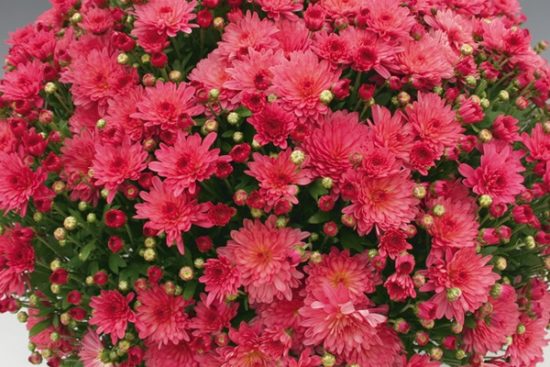
Bransky plum |
A variety that is rare in height among Multiflora chrysanthemums, attracting attention not only with its splendor and bright color, but also with its complete absence (at first glance) leaves among flowering baskets. They are completely hidden under the abundantly flowering crown.
- After planting, the bush can grow up to sixty to seventy centimeters, quickly becoming lush and remaining neat in appearance.
- Double inflorescences can be medium to small in size and range from three to five centimeters in diameter.
- Bright red flowers or baskets with a muted reddish tint bloom in September and bloom until mid-November.
- Winter hardiness is low, so you should not leave chrysanthemums in the open ground after flowering has ended. Wintering in a cellar or basement is recommended.
This variety of chrysanthemums looks great in combination with coniferous or cereal plants, as well as as a frame for paths and beds.
Branpetit Salmon
|
A special feature of this low-growing and compact variety is its delicate flowers, which contain creamy, creamy and salmon shades. |
An unpretentious bush to care for, it has low winter hardiness. When planting seedlings, the bottom of the hole must be covered with drainage material, since the plants do not tolerate stagnant moisture.
- The average height of a culture in adulthood is thirty centimeters.
- The diameter of the baskets does not exceed two and a half centimeters.
- Chrysanthemums bloom in September and October.
- Plant crops of this variety do not tolerate even minimal frosts, so it is very important to dig up the bushes in a timely manner and transfer them for storage to the basement with a temperature of one to five degrees.
The variety is used to create flower arrangements, for single plantings, for open ground and for growing in containers. Plants thrive on open terraces, loggias and balconies.
Branbeach Lilac
|
A double, small-flowered variety that independently acquires a hemispherical shape, thanks to genetics and a large number of inflorescences. |
To maintain decorativeness and abundance of flowering, plants need an open sunny area with full lighting throughout the day.
- An adult bush grows thirty-five to forty centimeters in width and forty to fifty centimeters in height.
- The size of the pale purple inflorescences is about four to five centimeters.
- Active flowering begins late, only in the second half of September, and ends in November.
- It is better for plants to spend the winter period indoors with a low temperature, since outdoor crops cannot be saved from severe frosts even under cover.
Don't forget to read:
Winter-hardy varieties of perennial garden chrysanthemums with photos and names ⇒
Branbeach White
|
The multiflora chrysanthemum variety with a medium flowering period is very popular among landscape designers and bouquet makers. |
Its delicate colors fit perfectly into any flower arrangement with bright colors and unusual shades, both in the open ground - in a flower garden and flowerbed, and in a holiday bouquet.
- The width of the crown is slightly greater than the height of the bush. It reaches forty-five centimeters in diameter and about thirty-five in height.
- Beautiful snow-white flowers consist of pure white edge petals and salad or lemon-colored centers. The size of the inflorescences - pompoms - is four to six centimeters.
- In early September, crops give lush and abundant flowering, which continues until frost.
- Plants need to overwinter in the basement.
Reference! At temperatures of eight degrees or more, chrysanthemums begin to grow, which is very dangerous for them in winter.
Popcorn
|
One of the new varieties, obtained as a result of lengthy breeding work, belongs to the small-flowered spherical chrysanthemums. |
Plants are distinguished by the rapid growth of a hemispherical crown without a single haircut.The culture received its name due to the unusual coloring of the inflorescences.
- Already in the first season after planting, the bush grows to thirty to forty centimeters and begins to form buds. The crown width reaches sixty centimeters.
- The first flowers appear in mid-September and remain until real frost.
- The variety is characterized by high winter hardiness and can winter in open ground even without shelter, but only under a thick layer of snow. In regions with snowless winters, lutrasil will be required.
Chrysanthemum is not afraid of transplantation even during the flowering period. If you transplant it from an open flowerbed into a pot around October, it will continue to delight with its yellow baskets almost until the end of December.
Planting and caring for spherical chrysanthemums
To plant spherical chrysanthemums, you should choose a sunny place with loose and permeable soil. The sooner the plants are planted in open ground, the larger the bushes and the more abundant the flowering will be. When growing multiflora chrysanthemums in the southern regions, wintering in open ground is possible, but still every 2 years it is necessary to divide and transplant the bushes to a new place.
Planting in open ground
Variety selection and planting dates
When choosing a variety, you should be guided by the plants’ resistance to climate and flowering time. For example, in the central zone it is better to plant chrysanthemums of early and medium varieties. They will have time to bloom before the winter cold arrives. Late crops will have to be transplanted into a container in September - October in order to have time to admire the flowering bushes.
The optimal time for planting seedlings in the Moscow region, Siberia and the Urals is from the first to the fifteenth of June. In the southern regions, this procedure can be carried out in April.The main condition for timely planting is warm soil with a temperature of twelve to fourteen degrees at a depth of up to twenty centimeters.
Place and soil
Multiflora chrysanthemums prefer to grow in an open, windless and well-warmed area, possibly on a hill. In shade and partial shade, the shoots begin to stretch, very few buds are formed, and the decorative effect is low. Groundwater must be at great depth.
Soil requirements – lightness, looseness, fertility, low acidity.
Landing Features
Since the tender leaves of the seedling can get sunburned when planting, it is recommended to carry out the procedure in the early morning, evening or on a cloudy day.
- Within a few days, the seedlings are placed in a container with a moderately moist substrate so that they quickly emerge from the dormant period and begin to grow as early as possible.
- Planting holes are located at a distance of thirty to sixty centimeters from each other (depending on the variety and size), the depth of each is from thirty to forty-five centimeters. Planting can be done in a staggered pattern or in rows.
- A layer of expanded clay, fine gravel, coarse sand or crushed nut (egg) shells is placed at the bottom of the pit, then the prepared soil mixture is placed, after which it is watered abundantly.
- Plants in containers are also well watered so that they can be easily removed from the pot along with a lump of earth.
- Young crops are placed in a hole at a shallow depth, sprinkled with soil and watered. Once the water has been absorbed, mulch can be applied around the bush.
Do not miss:
Rules of care
- The soil around each bush must be moistened as needed. It should always be slightly damp.To soften the irrigation water, it is recommended to add a couple of drops of ammonia. Crops also respond well to rainwater.
- Every two weeks, chrysanthemums are fed with mineral and organic fertilizers, alternating them with each other.
- For tall varieties, a garter will be required to the support so that the stem is not damaged under the massive spherical crown.
The autumn garden and autumn season will become more festive and inspiring if it contains various varieties of Multiflora chrysanthemums with many colors and shades.
You might be interested:
- The best hosta varieties with photos and names
- Description of the 25 best varieties of herbaceous peonies
- The best varieties of clematis 3 pruning groups with descriptions and photos
- 25 best varieties of floribunda roses with photos and names
- Varieties of climbing roses with photos and names
- Planting and caring for bush perennial chrysanthemums in the garden
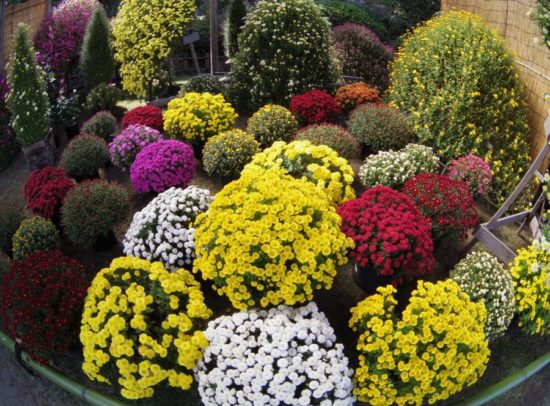
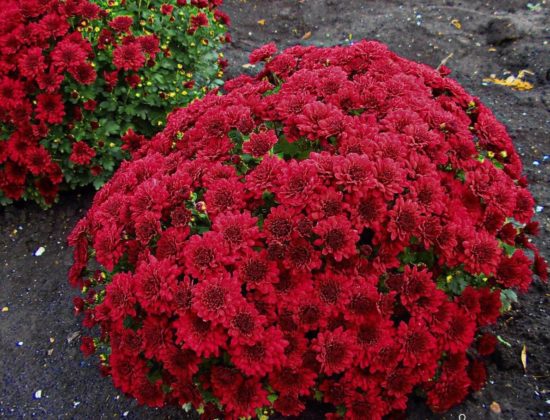
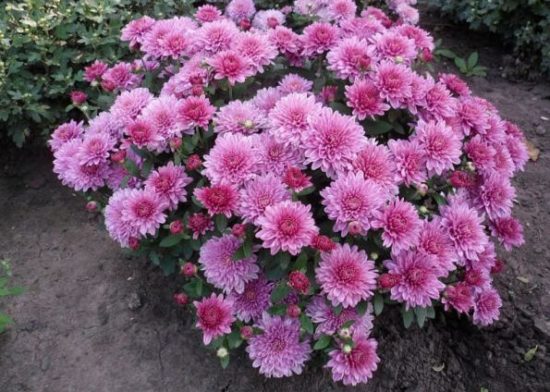
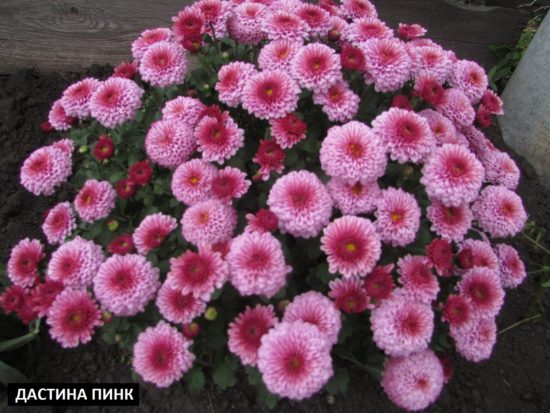
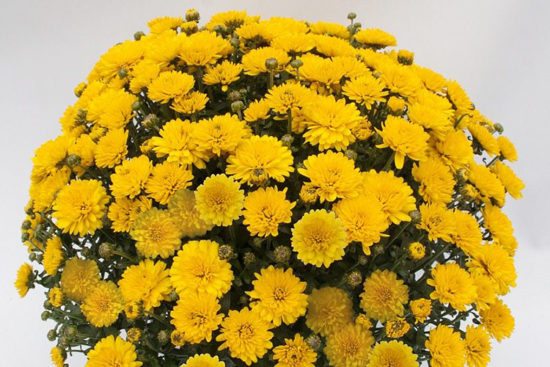
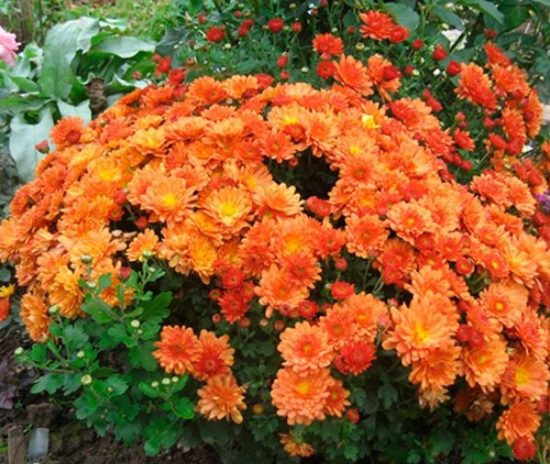
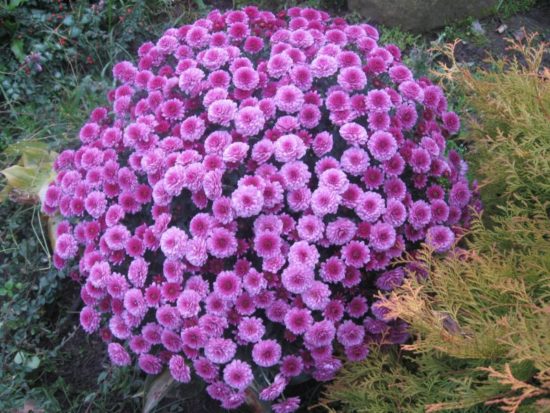

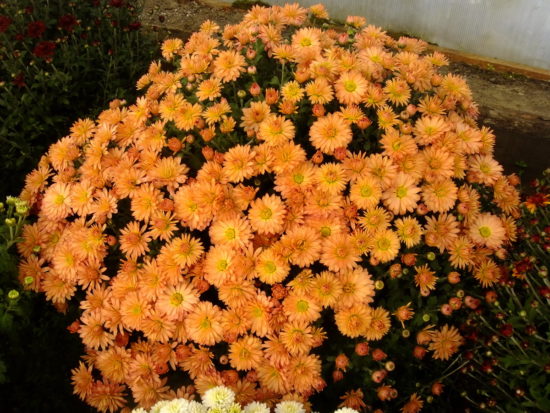
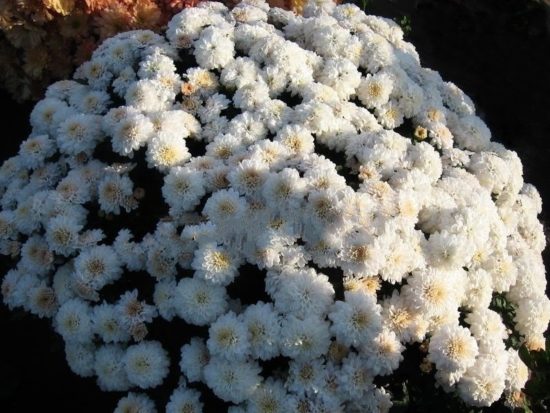
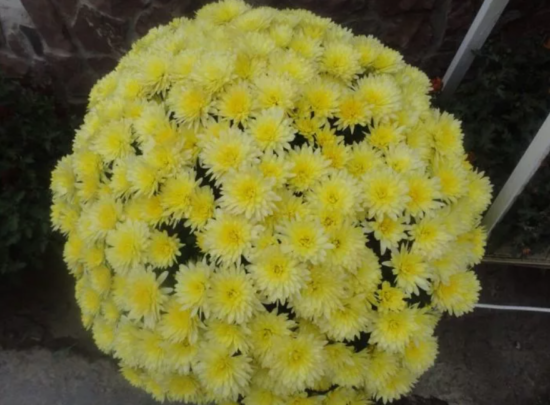

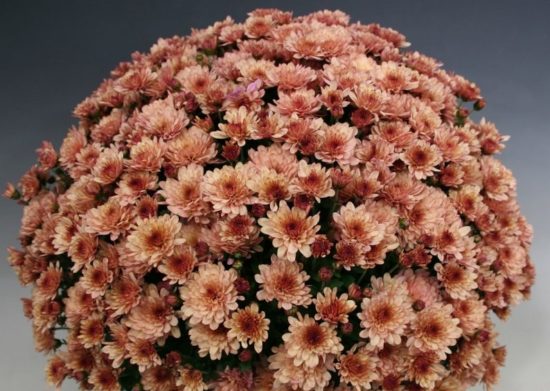
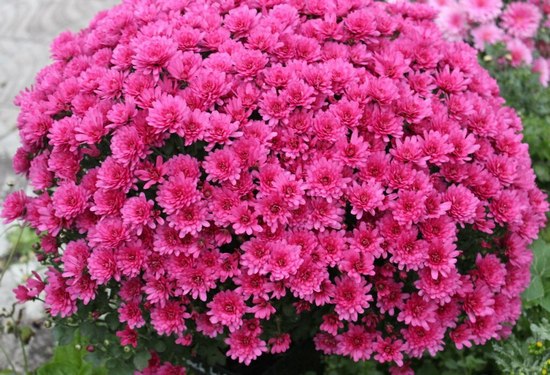
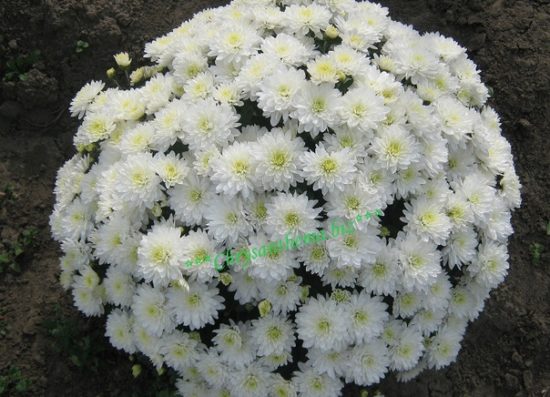
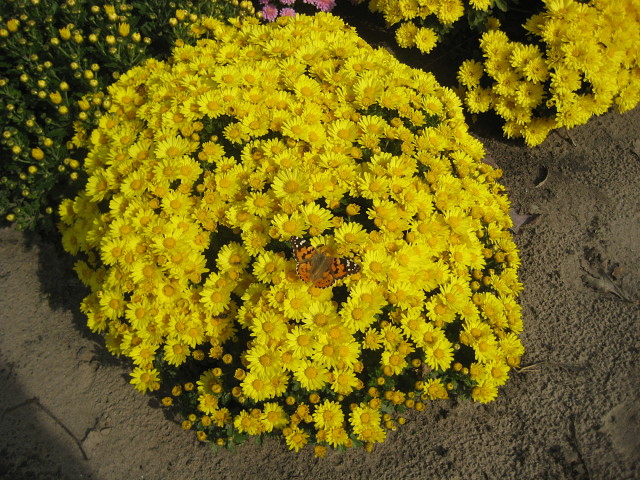

 (2 ratings, average: 4,50 out of 5)
(2 ratings, average: 4,50 out of 5) CUCUMBERS NEVER GET SICK, I'VE BEEN USING ONLY THIS FOR 40 YEARS! I SHARE A SECRET WITH YOU, CUCUMBERS ARE LIKE THE PICTURE!
CUCUMBERS NEVER GET SICK, I'VE BEEN USING ONLY THIS FOR 40 YEARS! I SHARE A SECRET WITH YOU, CUCUMBERS ARE LIKE THE PICTURE! You can dig a bucket of potatoes from each bush. Do you think these are fairy tales? Watch the video
You can dig a bucket of potatoes from each bush. Do you think these are fairy tales? Watch the video
 How our fellow gardeners work in Korea. There is a lot to learn and just fun to watch.
How our fellow gardeners work in Korea. There is a lot to learn and just fun to watch. Eye trainer. The author claims that with daily viewing, vision is restored. They don't charge money for views.
Eye trainer. The author claims that with daily viewing, vision is restored. They don't charge money for views. A 3-ingredient cake recipe in 30 minutes is better than Napoleon. Simple and very tasty.
A 3-ingredient cake recipe in 30 minutes is better than Napoleon. Simple and very tasty. Therapeutic exercises for cervical osteochondrosis. A complete set of exercises.
Therapeutic exercises for cervical osteochondrosis. A complete set of exercises. Which indoor plants match your zodiac sign?
Which indoor plants match your zodiac sign? What about them? Excursion to German dachas.
What about them? Excursion to German dachas.